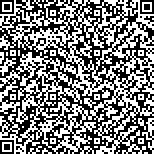Archive > Volume 43 Issue 12 > 2017,43(12):1453-1460. DOI:10.7519/j.issn.1000-0526.2017.12.001 Prev Next
Impact of Increased Greenhouse Gas Concentration and Land Use/Land Cover Changes on Diurnal Temperature Range in Northern Hemisphere
- Article
- Figures
- Metrics
- Preview PDF
- Reference
- Related
- Cited by
- Materials
Abstract:
To investigate the impact of increased greenhouse gas (GHG) concentration and land use and land cover change (LULCC) on diurnal temperature range (DTR), several numerical experiments were performed using the fully coupled Community Earth System Model (CESM). The results of the model simulation show that the increased GHG concentration has led to significant decrease in DTR over mid- and high- latitudes of the Northern Hemisphere. However, GHG- induced changes in DTR have the significant differences in different seasons. During the warm and cold seasons, there is an opposite change character in the North America and the Siberia Region. The reduction of annual DTR induced by the increased GHG-over mid-high-latitudes is mainly contributed by the cold season. LULCC caused a weakening of the DTR in Eastern Asia, Southern Asia, Europe, and Eastern North America. We visualize the LULCC- and GHG-induced changes to the DTR in both magnitude and sign by the aid of coordinate axis. GHG plays a more important role in changing DTR in Southern Asia and Europe and in highlatitudes of the Northern Hemisphere. In contrast, LULCC plays a dominant role in determining changes in DTR in the midlatitudes of the Northern Hemisphere and Southern Asia, whether in the magnitude or value of the changes in DTR.
Keywords:
Project Supported:
Clc Number:
P46,X16


Mobile website









